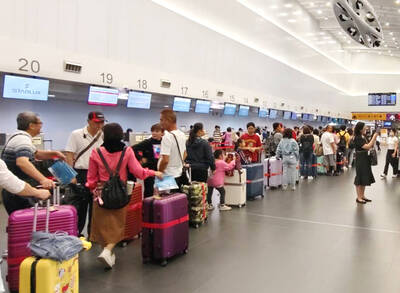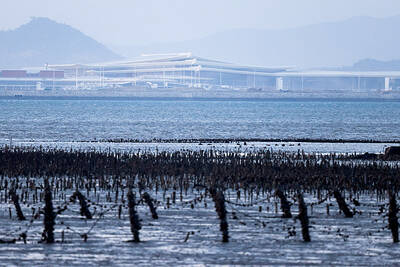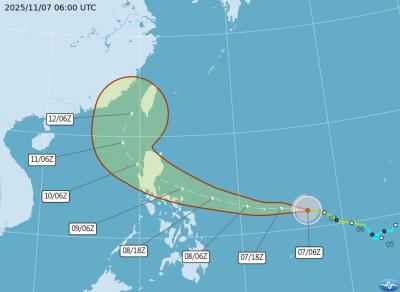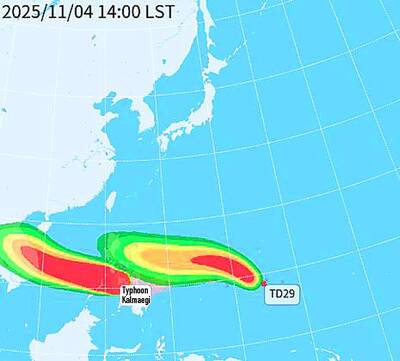The Council of Agriculture yesterday launched a new round of compulsory measures to prevent the spread of fall armyworms that involve spraying pesticide in all areas where they have been sighted.
Twenty-one new sightings of the pest were reported from Friday to Monday in the outlying islands of Kinmen, Matsu and Penghu, as well as in Hsinchu, Miaoli, Chiayi, Pingtung and Hualien counties on Taiwan proper, a council task force responsible for eliminating the insects said, adding that eggs and pupae have been found.
A total of 68 of the larval form of the pest have been sighted nationwide since the first sighting was confirmed in a corn field in Miaoli County on June 10.
Crops have been uprooted and buried on 28 farms, the task force said.
Only Nantou County and Kaohsiung, as well as Green Island (綠島) and Orchid Island (Lanyu, 蘭嶼), have not reported sightings, council data showed.
As the time frame to eliminate first-generation larvae comes to an end and additional sightings have been reported, the task force announced a second round of measures: destroying eggs, pupae and moths with pesticide.
Officials are also educating farmers on the appearance of the eggs, larvae, pupae and moths, and asking them to immediately report any sightings to the authorities.
They have also deployed 500 pheromone traps nationwide.
Fall armyworms, so named as they crawl in large numbers from field to field after exhausting their food supply, have a life cycle of about 30 days, in which they go through four stages: egg, larva, pupa and moth.
Fall armyworm eggs measure about 0.4mm by 0.3mm, and the pupa is reddish brown in color and measures 14mm to 18mm long and about 4.5mm wide.
The moth has a wingspan of 32mm. Male moths have gray-and-brown forewings, with triangular white markings at the tip and near the center.
The forewings of female moths range from a uniform grayish brown to a fine mottling of gray and brown.
The hind wings in both sexes are iridescent silver-white with a narrow dark border.
The council is offering a reward of NT$10,000 to people who make a confirmed report of the pest until tomorrow.

Three Taiwanese airlines have prohibited passengers from packing Bluetooth earbuds and their charger cases in checked luggage. EVA Air and Uni Air said that Bluetooth earbuds and charger cases are categorized as portable electronic devices, which should be switched off if they are placed in checked luggage based on international aviation safety regulations. They must not be in standby or sleep mode. However, as charging would continue when earbuds are placed in the charger cases, which would contravene international aviation regulations, their cases must be carried as hand luggage, they said. Tigerair Taiwan said that earbud charger cases are equipped

UNILATERAL MOVES: Officials have raised concerns that Beijing could try to exert economic control over Kinmen in a key development plan next year The Civil Aviation Administration (CAA) yesterday said that China has so far failed to provide any information about a new airport expected to open next year that is less than 10km from a Taiwanese airport, raising flight safety concerns. Xiamen Xiangan International Airport is only about 3km at its closest point from the islands in Kinmen County — the scene of on-off fighting during the Cold War — and construction work can be seen and heard clearly from the Taiwan side. In a written statement sent to Reuters, the CAA said that airports close to each other need detailed advanced

Tropical Storm Fung-Wong would likely strengthen into a typhoon later today as it continues moving westward across the Pacific before heading in Taiwan’s direction next week, the Central Weather Administration (CWA) said. As of 8am, Fung-Wong was about 2,190km east-southeast of Cape Oluanpi (鵝鑾鼻), Taiwan’s southernmost point, moving westward at 25kph and possibly accelerating to 31kph, CWA data showed. The tropical storm is currently over waters east of the Philippines and still far from Taiwan, CWA forecaster Tseng Chao-cheng (曾昭誠) said, adding that it could likely strengthen into a typhoon later in the day. It is forecast to reach the South China Sea

WEATHER Typhoon forming: CWA A tropical depression is expected to form into a typhoon as early as today, the Central Weather Administration (CWA) said yesterday, adding that the storm’s path remains uncertain. Before the weekend, it would move toward the Philippines, the agency said. Some time around Monday next week, it might reach a turning point, either veering north toward waters east of Taiwan or continuing westward across the Philippines, the CWA said. Meanwhile, the eye of Typhoon Kalmaegi was 1,310km south-southeast of Oluanpi (鵝鑾鼻), Taiwan’s southernmost point, as of 2am yesterday, it said. The storm is forecast to move through central